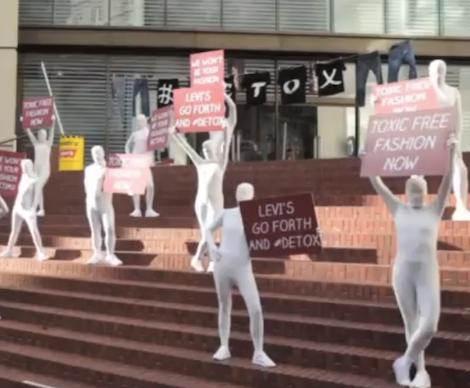As a mom, I can’t imagine how scary it would be to watch your child struggle to breathe. That’s why I’m so thankful that today the Environmental Protection Agency has announced new air quality standards for soot that will save thousands of lives and billions of dollars.
Soot is one of the most deadly forms of air pollution, and these soot limits are especially important for kids, the elderly and people already suffering from respiratory ailments.
Soot particles are released into the air by burning dirty fuels like coal. Soot is composed of dangerous metals and chemicals, and the particles are so small — as tiny as 1/30th the width of a human hair — that they can lodge deep within the lungs and move into our blood streams, carrying with them toxic pollutants like arsenic and lead. Even at very low levels, soot is harmful to human health and can cause heart attacks, strokes, asthma attacks, cancer, developmental and reproductive harm, and even premature death.
The good news is that we can clean up soot and protect our health — and our planet. EPA’s stronger standards — tightening soot pollution reductions by 20% — will lead to cleaner, safer air nationwide and prevent approximately 15,000 premature deaths every year. Additionally, these updated standards are expected to save $118 billion in health care costs annually and will help ensure Americans are better informed when their local air quality reaches hazardous levels.
This new protection is also an important step towards holding fossil fuel polluters accountable for their pollution. Americans across the country are paying the price for fossil fuel pollution, from streams contaminated by coal mining in Appalachia, to kids struggling with asthma in our cities, to those still fighting to recover from Superstorm Sandy — a storm made more destructive by climate disruption. By finally insisting that these polluters deal with their pollution, we will improve the lives of millions of Americans and level the playing field for clean energy.
This move to strengthen soot standards is required by the Clean Air Act, a bedrock public health protection that has a track record of not only saving lives, but saving Americans billions of dollars.
“The total benefits of the Clean Air Act amount to more than 40 times the costs of regulation. For every dollar we have spent, we get more than $40 of benefits in return,” said EPA Administrator Lisa Jackson at the 40th anniversary of the Clean Air Act.
In a time when many in Congress keep hammering on the EPA and are trying to hamstring the agency by gutting its budget, I am encouraged to see Administrator Jackson and EPA continuing to stand strong for public health and the environment. I also know she’s not just because of her background as a scientist, but because her own children suffer from asthma.
And it’s not just parents! These new standards have broad, diverse support — from the NAACP, unions, health professionals and nurses, green groups, attorneys general, and more. Members of Congress have also spoken out for soot limits. The American public strongly supports soot standards, as well, according to recent polling.
EPA’s soot limits ensure that polluters do not have free rein to pump dirty pollution into our air, harming our health and the environment. We applaud EPA and the Obama Administration for standing up for public health.



